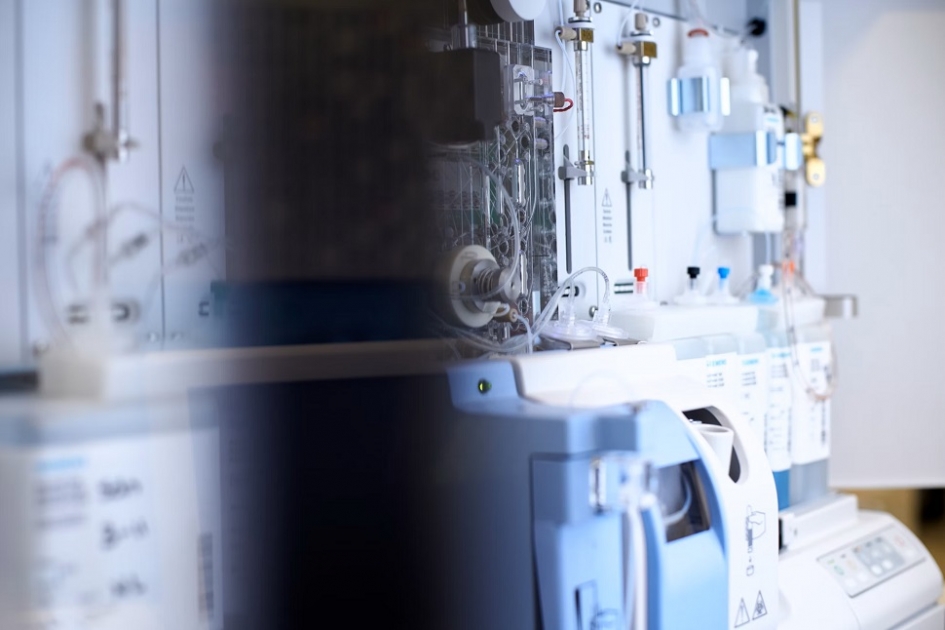
Potential Implications of AOD-9604 Peptide in Scientific Research and Beyond
AOD-9604, a synthetic peptide fragment derived from the C-terminal of the growth hormone (hGH), has garnered considerable attention in recent years within various research domains. While its initial development was primarily related to its potential impact on metabolic regulation, the peptide has attracted interest in various implications. This article delves into the various research areas where AOD-9604 might contribute, exploring its unique properties and possible directions to advance scientific understanding.
Composition and Structure of AOD-9604
AOD-9604 is a modified fragment of the growth hormone, specifically consisting of amino acids 177–191. This hormone segment is believed to hold certain biological properties distinct from the full-length molecule. The peptide does not exhibit the full spectrum of activity typical of growth hormone, which might involve complex interactions with growth factor receptors across various organ tissues. Instead, AOD-9604 is primarily studied for its potential impact on lipid metabolism, protein synthesis, and cellular regeneration in specific contexts.
Metabolic Research and Lipid Metabolism Studies
One of the most explored aspects of AOD-9604's potential is its impact on lipid metabolism. The peptide has been theorized to play a role in lipolysis, the breakdown of fat stores within a research model. Preliminary investigations suggest that AOD-9604 might impact the rate at which triglycerides are converted into free fatty acids, thus impacting overall adipose tissue distribution. These impacts may be particularly interesting in research exploring obesity and metabolic disorders, as the peptide may provide a model for understanding fat metabolism without the more extensive physiological consequences of growth hormones.
Moreover, it has been speculated that AOD-9604 may modulate the activity of enzymes like lipoprotein lipase, which are involved in processing lipids in various tissues. Research indicates that by modulating lipid processing pathways, AOD-9604 might be used to explore alternative mechanisms for fat breakdown, potentially offering insights into strategies for diseases where lipid accumulation is problematic, such as non-alcoholic fatty liver disease (NAFLD) or atherosclerosis.
Tissue and Wound Research
Another intriguing domain of interest for AOD-9604 is tissue regeneration, especially in wound healing. Studies suggest that the peptide may exhibit properties that promote cellular repair and regeneration by impacting the cellular signaling pathways that drive tissue recovery after injury. Investigations have suggested that AOD-9604 might aid in the modulation of growth factors such as fibroblast growth factor (FGF) and vascular endothelial growth factor (VEGF), which play paramount roles in tissue repair and angiogenesis.
The regenerative potential of AOD-9604 may be particularly relevant for research focusing on recovery processes in tissues prone to damage or degeneration. These include musculoskeletal tissues, skin structure, and possibly even cartilage. It has been theorized that the peptide's impact on collagen production and fibroblast activity may support tissue repair, particularly in chronic conditions like osteoarthritis or other degenerative joint diseases. While AOD-9604 has not been conclusively linked to these processes, the peptide's potential as a wound-healing modulator may warrant further investigation.
Bone Integrity and Osteogenesis Research
Emerging research indicates that AOD-9604 may impact bone integrity. While much of the focus on growth hormone and its fragments has revolved around its anabolic properties in muscular and adipose tissue, certain studies have suggested that AOD-9604 may play a role in osteogenesis, the process of creating new bone. Investigations purport that the peptide may impact osteoblast activity and the synthesis of bone matrix proteins, such as collagen and osteocalcin.
Cardiovascular Implications
In addition to its proposed impacts on lipid metabolism and bone integrity, AOD-9604 has been implicated in research concerning cardiovascular science. Investigations purport that the peptide might impact adipose tissue distribution, affecting cardiovascular risk factors. Excess visceral fat, which accumulates around vital organs, is a main risk factor for cardiac disease and related conditions.
The findings imply that the peptide might impact the mitigation of visceral fat accumulation by modulating metabolic pathways in adipocytes (fat cells). This may have downstream implications for the prevention or management of metabolic syndrome, a condition often associated with heart disease, diabetes, and hypertension. The modulation of lipid metabolism might also mitigate the load on the circulatory system by altering the lipid profiles of circulating blood, thus potentially alleviating strain on the heart and blood vessels.
Investigating AOD-9604 as a Research Tool
Beyond its possible research implications, AOD-9604 might be a valuable scientific tool. The peptide's potential to target specific metabolic pathways without affecting the broader hormonal systems that growth hormone impacts may make it an ideal candidate for studying lipid metabolism, cellular regeneration, and metabolic diseases in a controlled manner. By studying how AOD-9604 interacts with various enzymes, receptors, and cellular processes, researchers may gain deeper insights into these biological systems and identify potential research targets for various diseases.
Conclusion
While AOD-9604 is still being investigated, its potential implications span various scientific domains. From metabolic regulation and lipid metabolism to tissue regeneration and bone integrity, the peptide has been hypothesized to offer significant insights into how specific biochemical pathways might contribute to the function of various organs and tissues. Moreover, its possible role as a research tool to explore metabolic diseases and tissue repair further solidifies its importance in modern research. Click here to read another article about AOD-9604.


























